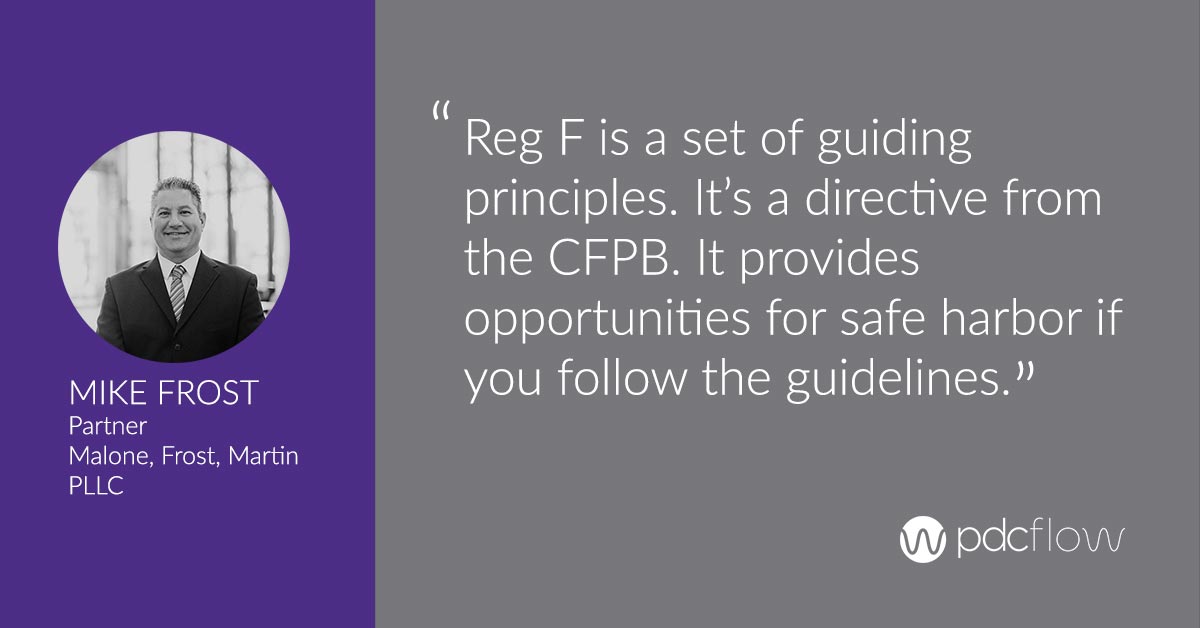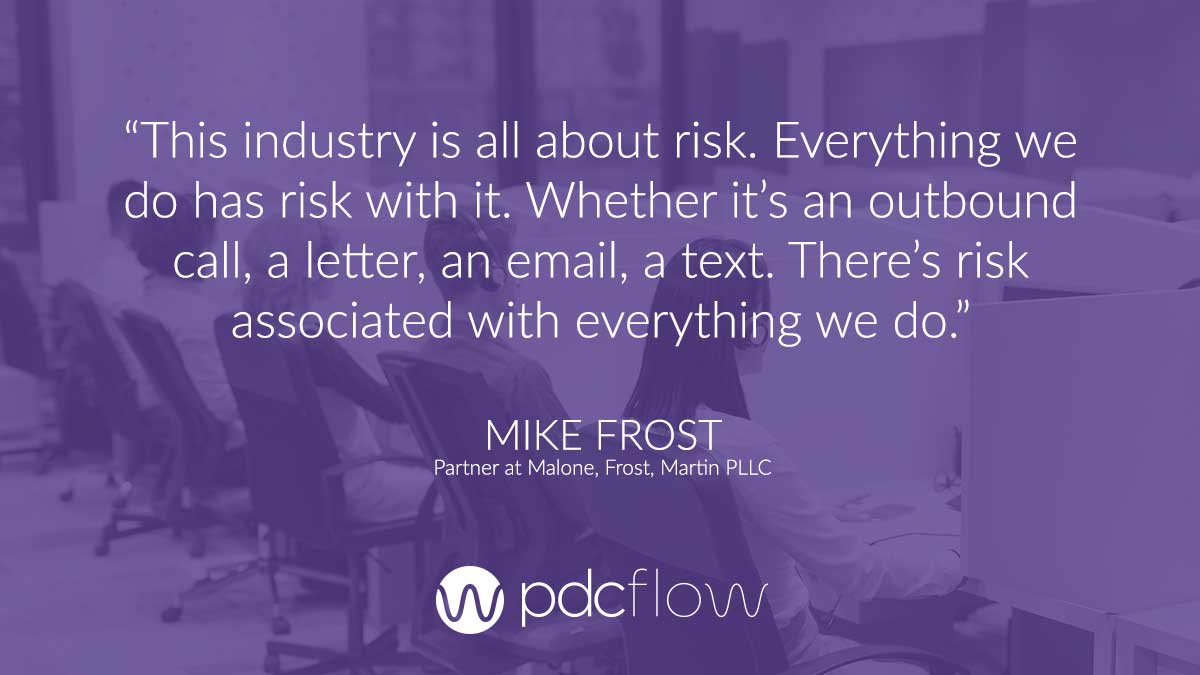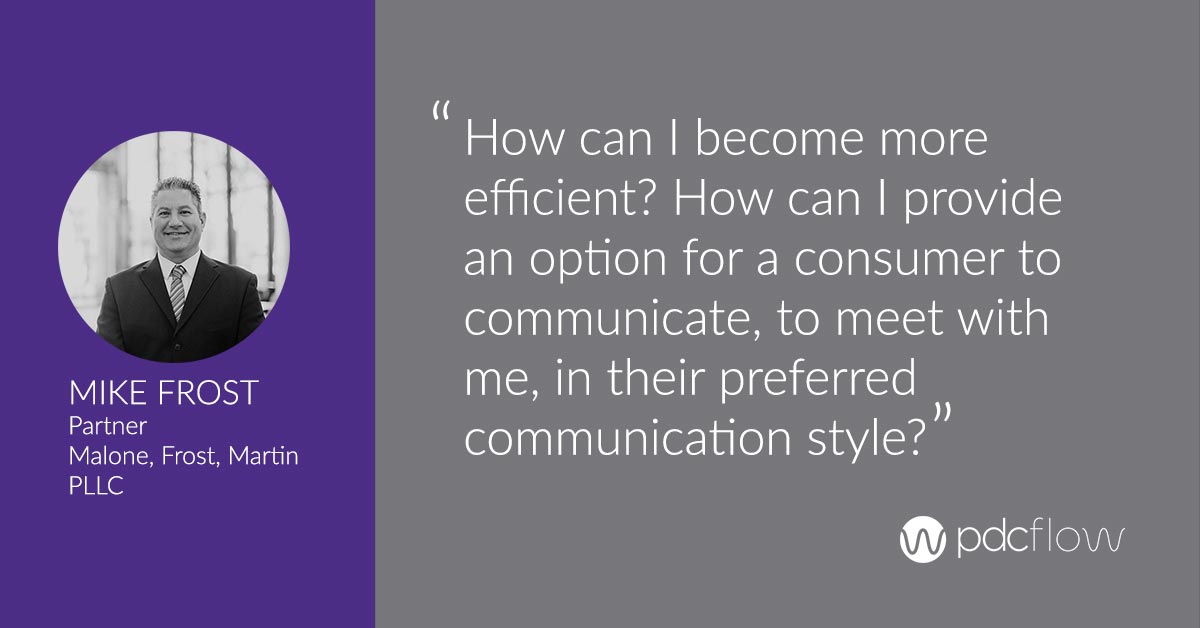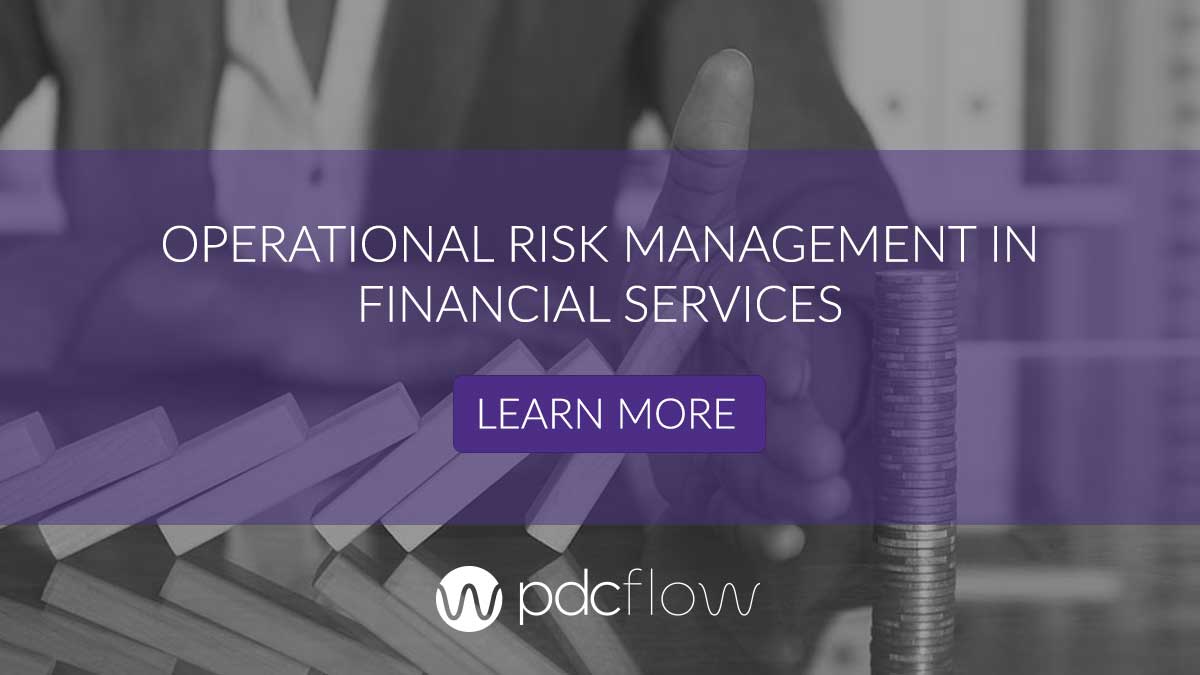The long-awaited Regulation F recently outlined how the CFPB expects debt collection agencies to operate. The Bureau’s intentions with the regulation are to standardize debt collection, protect consumers and create a better customer experience.
Now that Regulation F has finally been implemented, industry experts like Mike Frost, partner at Malone, Frost, Martin PLLC, are monitoring its impact and encouraging agencies to conduct a compliance risk assessment and commit to digital communication tools.

Mike Frost
Malone Frost Martin PLLC
Compliance Risk Assessments: Regulation F’s Impact
Business risk assessments of how to comply with Regulation F are now part of debt collection. Agencies know they must comply and have done the preliminary work to meet requirements. Frost notes there haven’t been many lawsuits tied to Regulation F yet, which is a positive sign.
But now it’s up to compliance managers and agency owners to maintain compliance risk assessment processes to keep their businesses safe. Regulation F hasn’t been in effect for more than a few months, so it still may be too early to tell what the future impact of the rule might be.

Original Impact - “The big thing for the agencies was the lift,” says Frost. Deciding how to comply with the rule and making the necessary changes to compliance programs has been a long, hard process. Complicated areas of the regulation – like the validation notice – created a big challenge to implementation and some weren’t ready when Regulation F took effect.
Compliance Burden - As mentioned, the model validation notices were a large part of the compliance burden for agencies and getting new letters in place has taken a lot of effort.
Some were waiting on file layouts and the right information from creditors to make these changes. Some agencies have decided against implementing the model notice and taking advantage of the safe harbor because they aren’t ready for such a big change and the potential risks.
Clarity - Although it created a challenge, areas of Regulation F do provide clarity for debt collectors. Although the final rule may be an adjustment, it outlines specifics that make it easier to comply during collection. Call caps and limited content messages are just a few examples of some specific rules now outlined that had never been addressed before.
Some solutions may not seem ideal for some companies but there is a clear-cut rule for how to handle voicemails, which is better than the ambiguity in previous years. 2022 will continue to show more about the rule’s legal or regulatory impacts on the industry

Have Debt Collectors Embraced Electronic Communications?
The accounts receivable industry requires constant compliance risk assessments to remain competitive. However, this practice of company risk assessment now intersects with the need to serve consumers in the ways they want to interact.
Frost says that the majority of agencies have begun using some type of electronic communication. This can range from a full omnichannel digital communication strategy to just getting started with email or text messaging. But many others still don’t have electronic channels in place at all.

The generational change in the workforce has had a big impact on technology, with more Generation X, Millennial and Gen Z consumers and fewer from older generations.
These younger people expect different communication channels than mail and phone calls and may even neglect messages from your agency if they are from an outdated communication channel.
Not only is this important to understand as agencies begin adopting technology, it will become more essential with each passing year, as younger generations make up a larger portion of consumers.
Failing to adapt is an operational risk. Soon it will impact how much money companies bring in because they won’t be able to effectively connect with people.
“If you’re not emailing today, you’re not texting today – you’d better figure it out,” says Frost. “Because there’s a way to do it compliantly and if you’re not doing it, you’re probably going to limit the amount of money you’re able to collect through your processes.”
Can an Agency Compliantly Send an Email With the New Validation Form?
Debt collection agencies can send validation notice emails to consumers and still remain compliant with Regulation F. Of course, this isn’t the only way to use email within your digital debt collection strategy.
You can use this channel for many other consumer interactions, including payment reminders, creditor information and account documentation, among others. Frost warns, however, that these and other communications may require ESIGN consent before using.
Complete any compliance risk assessments necessary and discuss all of your intended communications and messaging with your agency’s attorney, to ensure you’re following best practices and managing compliance risk.
Electronic Portals
Along with other electronic channels, Regulation F has opened the door to dispute management through electronic portals. Frost says this tool can be used for more than just disputes.
Consider using this space to collect communication opt-ins, ESIGN consent and other important account information. The agencies that made the business decision to begin using online portals are already finding that the service is wanted and needed by consumers.
Flow For Electronic Payment Communication
Evaluating your company’s risk tolerance while expanding communication offerings to consumers is hard. PDCflow’s Flow Technology offers streamlined, simple-to-use payment communication software with secure delivery, to make collecting payments easy.
What else can you accomplish with Flow?
- Reduced risk and PCI scope - Flow has security features that allow consumers to verify their identity and enter payment without your staff ever viewing or hearing sensitive payment information.
- Keep agents in control - Agents can send documents to sign, a payment request or other items to consumers while they’re still on the phone. Your staff can walk them through the process, ensuring the payment is processed before the conversation ends.
- Simplify operations - combining multiple business processes into one workflow saves agent time and cuts down on the software tools you need to run your business.
- Trust building - better serve customers and increase satisfaction by using secure email and text messaging. Secure payment channels and up-to-date payment trends build trust and credibility.
- Integration - Open APIs make it simple to keep track of all your data in one place. Integrate to your own system of record or use one of PDCflow’s already-existing partnerships.
To learn more about the rules governing email and text and how to obtain and manage consent, download the Email and Text in Debt Collection How-To.





